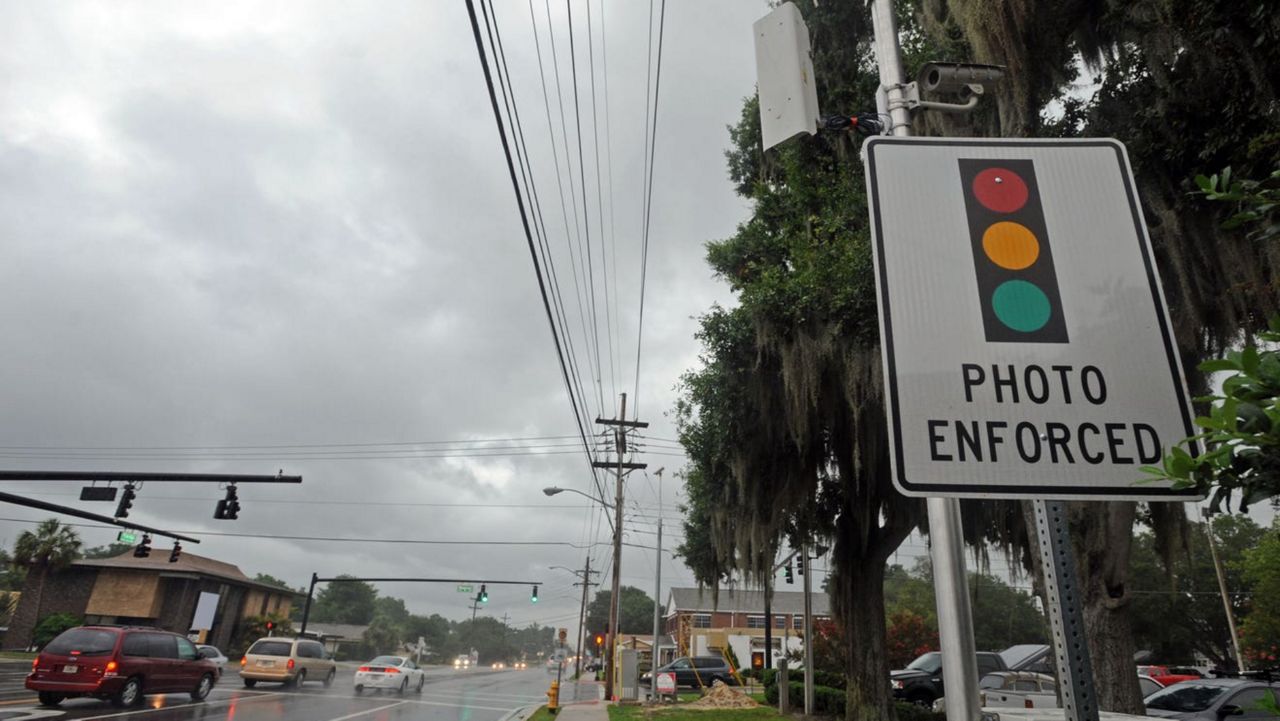LAKELAND, Fla. — Lakeland officials will accept a $500,000 cooperative funding grant from the Florida Department of Transportation to expand the city's use of smart technology aimed at reducing the number of fatal car crashes.
City commissioners voted unanimously to accept the state funding to help grow Lakeland's Intersection Collision Avoidance Safety Program, or iCASP, from four to up to 25 intersections by June 2023. The project's total cost is around $775,000, with the city responsible for $225,000.
"In terms of smart city applications, which we all hear about and a lot of people struggle with, 'What does that really mean." this is a perfect example," City Manager Shawn Sherrouse said.
Sherrouse said the iCASP system works by extending the all-red phase of a traffic signal when sensors detect a vehicle is traveling too fast to safely come to a stop before the intersection. Based on distance and the vehicle's speed, the software will delay giving a green light for approximately two to four seconds when it deems necessary to prevent a crash.
Lakeland has been operating the red light-running detection program at four major intersections in a pilot study since February 2021:
- U.S. 98 South and North Crystal Lake Road
- South Florida Avenue at Beacon Road
- West Memorial Boulevard at Martin L. King Jr. Boulevard
- East Memorial Boulevard and Massachusetts Avenue
Jeff Weatherford, the city's traffic operations manager, didn't have exact numbers immediately available on how often iCASP has activated at these intersection.
"Looking at the data, on any given day at the four locations we have there's a substantial number of folks entering the intersection when the light is red," he said.
Weatherford said a quick look showed roughly 60 vehicles traveling eastbound on Memorial Boulevard ran a red light at the intersection of N. Massachusetts Ave. and Lakeland Hills Boulevard on Monday. Of these, six times occurred after opposing traffic had been given the green despite the iCASP system.
Sites chosen for inclusion in the city's pilot study were, in part, chosen as they are also equipped with red light cameras. It allowed city staff the option of going back to check video to see what happened.
Weatherford said additional 21 sites will not necessarily have red light cameras as tracking video on red light-running detection was difficult and time consuming.
"Traffic operations is not concerned with enforcement," Weatherford said. "We are concerned with keeping people safe and not having serious injuries."
Lakeland officials must meet with FDOT to determine what intersections might see the greatest improvement and reduction in crashes by having iCASP installed. There is no list yet.
"Some have to be on their roadways, some can be on other roadways," Weatherford said. "My guess a significant number of them based on volumes and potential accidents will be on FDOT roadways."
There's a strong possibility the red light-running detection program will be installed at intersections along Bartow Road/US 98, Memorial Boulevard/US 92 and George Jenkins Boulevard, Weatherford said. City streets likely to have the system include Cleveland Heights Boulevard, Edgewood and Lake Parker drives.
Mayor Bill Mutz asked that city staff to ask FDOT about the potential of installing the iCASP system at signal intersections close to the city's schools.
The majority of the project's cost will be spent to upgrade the city's video detection and signal performance software at selected intersections that provide the data to work with iCASP.
City staff is also looking at a new mobile app that could partner with iCASP to potentially push out alerts to drivers in close proximity to a red light runner. A cell phone alert could be written to say something along the lines of "Caution: Watch for crossing traffic," Weatherford said. The aim is to make drivers more alert, not slam their brakes.
"To me, It's more exciting than the original concept." he said.
To sign up for this partner’s newsletter and have stories sent directly to your inbox, visit here.




